1. Thor’s Mighty Hammer
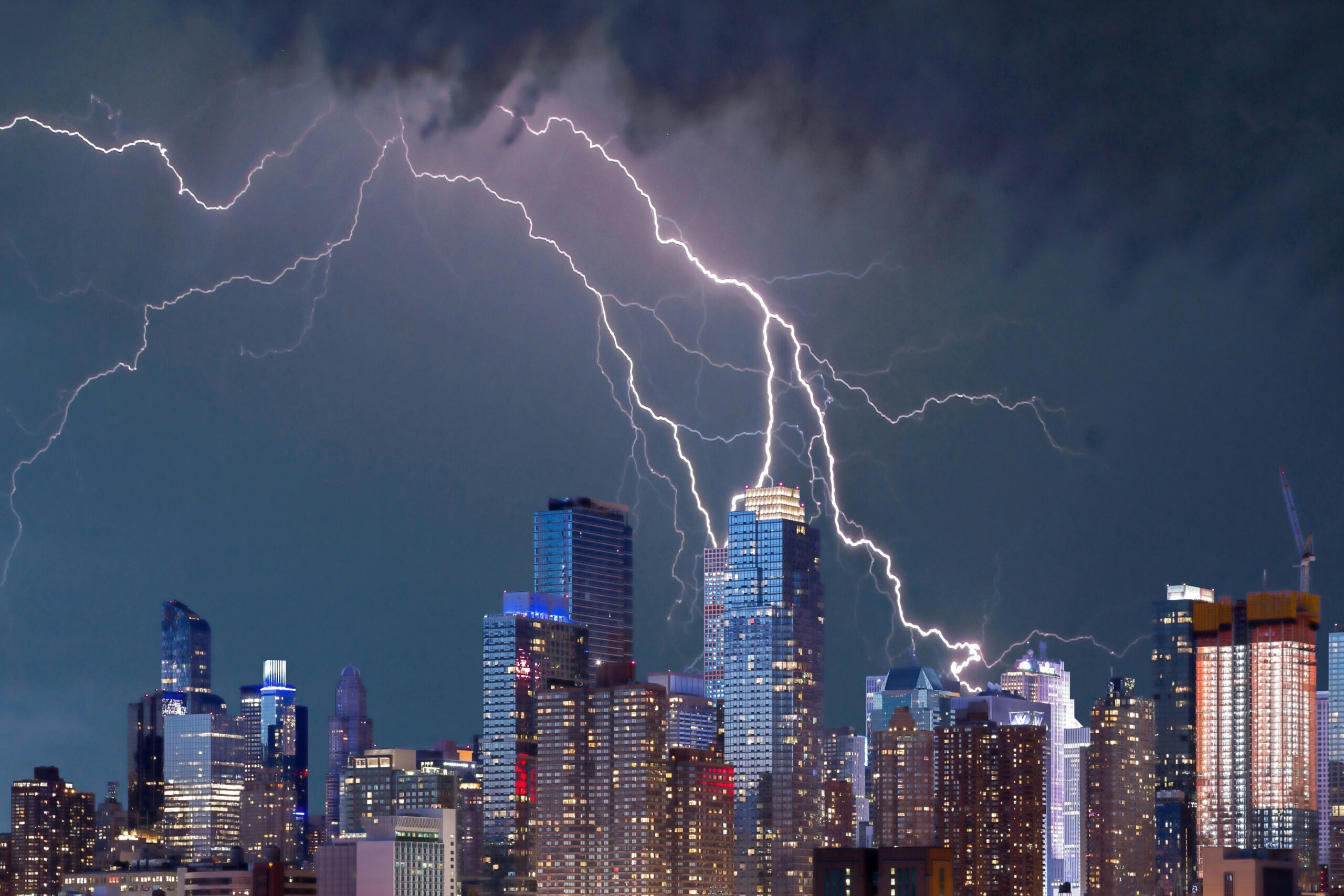
For centuries in Scandinavia, thunder and lightning were said to be the sound and spark of Thor’s hammer, Mjölnir, striking down giants. People would even carve hammer symbols into their homes or wear them as pendants for protection during storms. The rumble of thunder was comforting, like Thor was watching over them.
At the same time, the danger of being struck was ever-present, so families offered prayers and sacrifices to honor the god. This legend was so ingrained that when Christianity spread, many Norsemen kept their hammer charms right alongside the cross. It was a way of covering all bases. To them, lightning wasn’t just weather, it was a god making his presence known.
2. Zeus’ Wrath
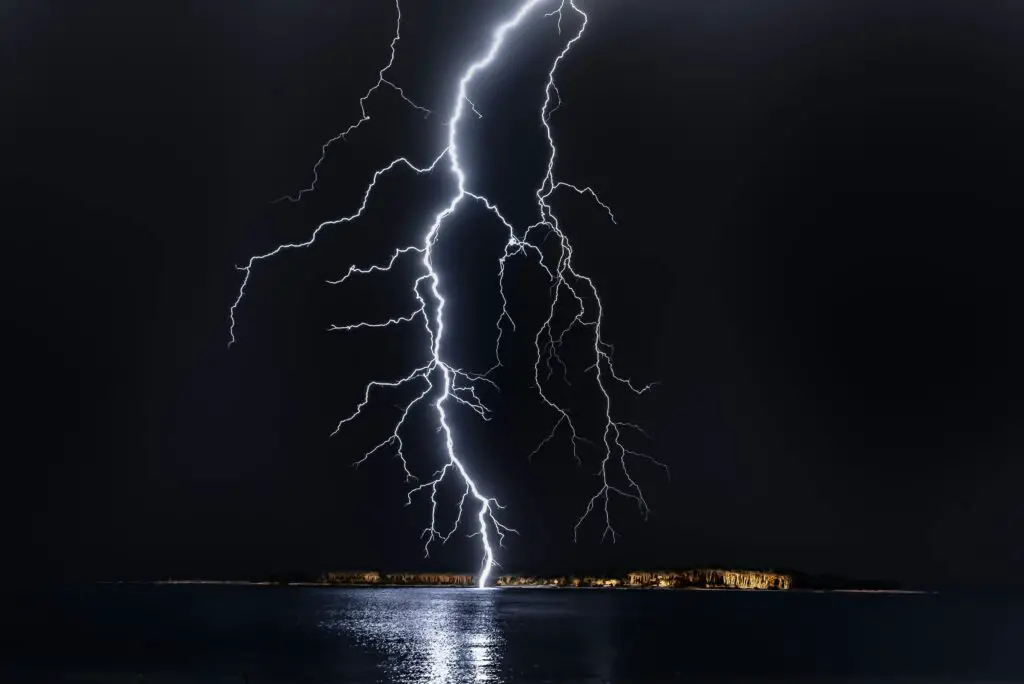
In ancient Greece, lightning was believed to be Zeus’ most powerful weapon. When storms rolled over the mountains, villagers thought it was Zeus hurling bolts at those who angered him. Temples were built on high places, almost as lightning rods, to honor him and keep his anger at bay.
People who survived a lightning strike were often thought to be chosen or cursed by Zeus. The bolts themselves were sometimes seen as divine messages, pointing to places of importance. Finding a scorched tree could mean that Zeus himself had left a mark. The fear and reverence blended into one powerful belief that endured for centuries.
3. Saint Elmo’s Fire
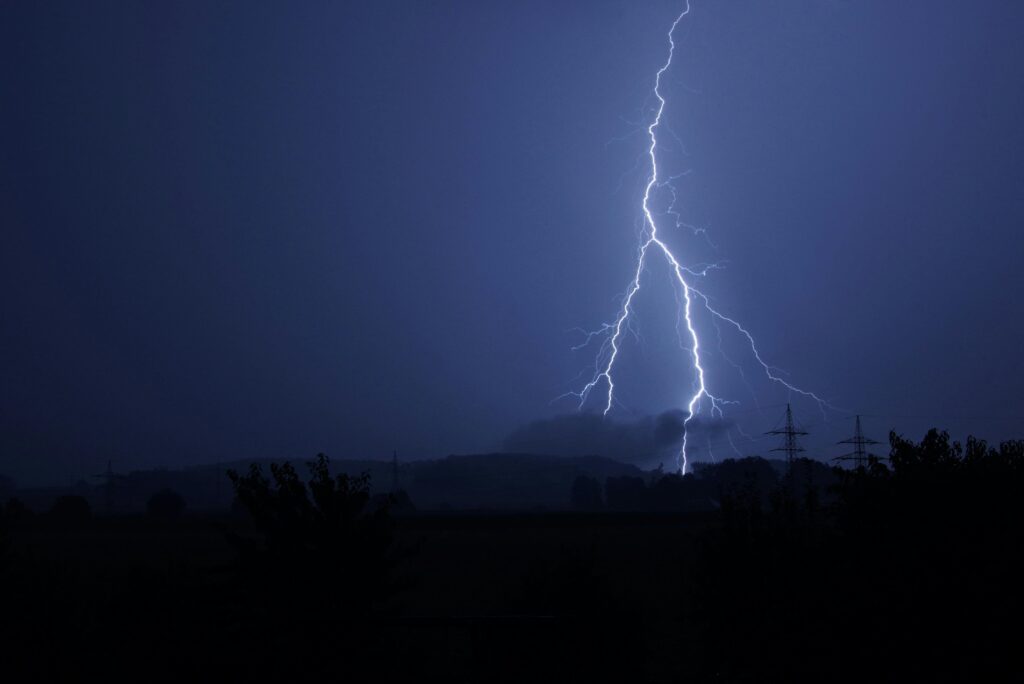
Sailors across Europe believed a blue flame flickering on ship masts before a storm was a sign of divine protection. Known as Saint Elmo’s Fire, the glow was actually plasma caused by electrical discharge, but to sailors it was a miracle. They thought Saint Erasmus, the patron saint of sailors, was watching over them.
Far from being scared, crews would cheer when they saw the glow. It meant they were being guided safely through the stormy seas. Of course, not everyone agreed—some worried it was a bad omen. Either way, the eerie blue light became one of the sea’s most haunting legends.
4. Lightning Stones
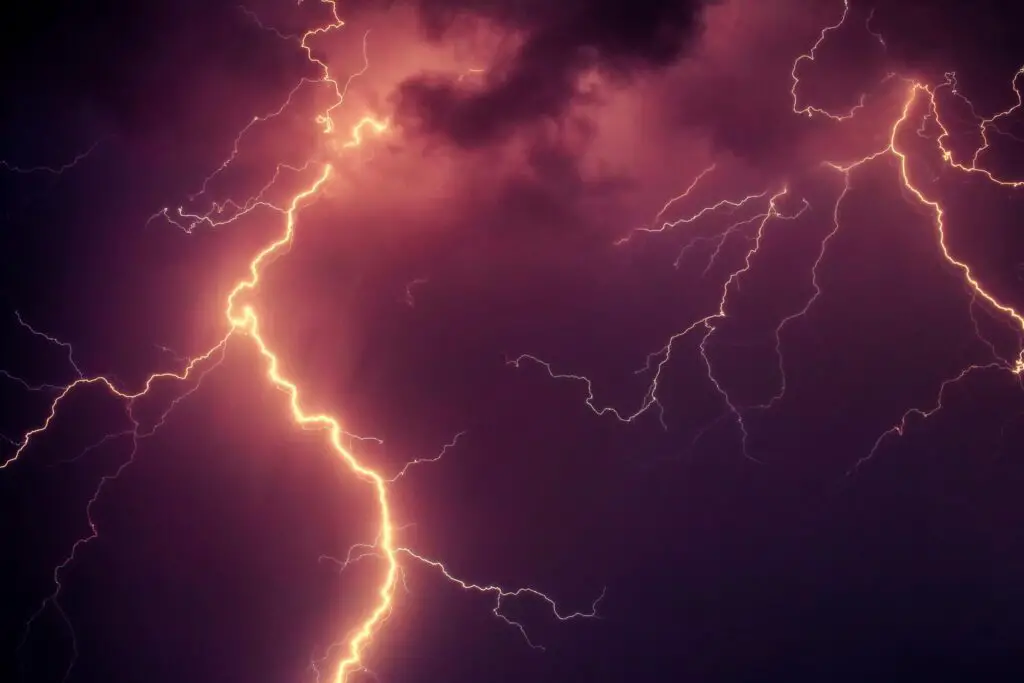
In medieval Europe, people believed that stones called “thunderstones” were formed where lightning hit the earth. These were actually prehistoric flint tools, but villagers thought they fell straight from the sky during storms. They collected them and kept them in their homes to ward off evil.
Thunderstones were said to protect against fire, witchcraft, and even snakebites. Farmers sometimes buried them in fields to ensure healthy crops. Whenever one was found, it felt like receiving a gift from the heavens. The legend gave people a sense of security in a world full of unpredictable weather.
5. The Devil’s Marks
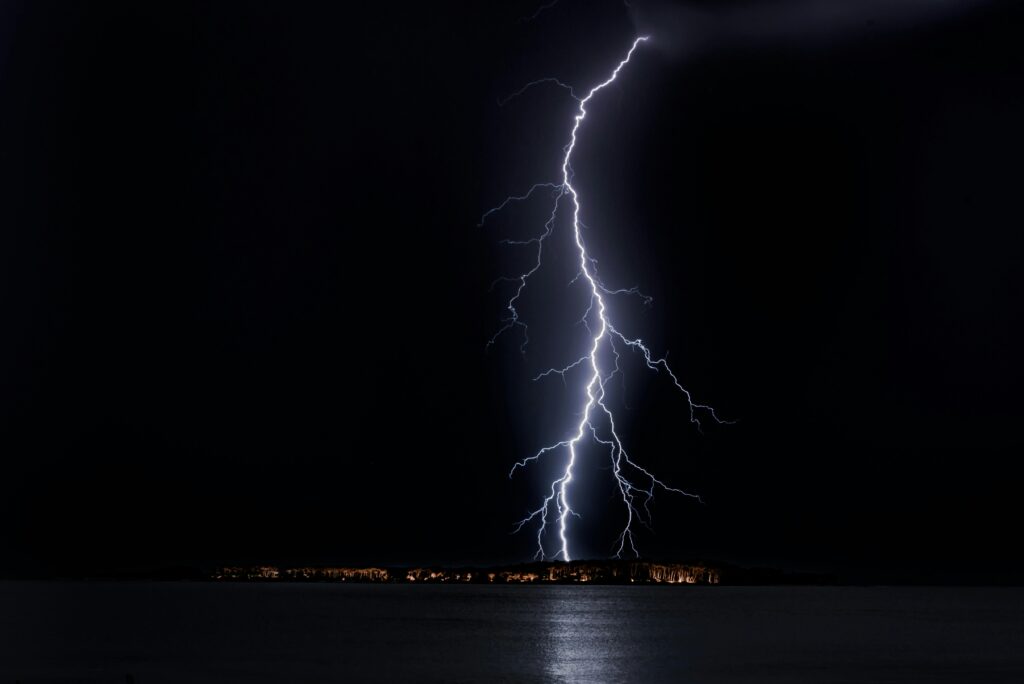
In some Christian folklore, it was believed that lightning strikes were the devil’s way of marking cursed places. A charred tree or blackened patch of ground was thought to be his handiwork. People avoided these areas, fearing they carried bad luck or evil spirits.
Sometimes entire buildings struck by lightning were abandoned, especially if lives were lost in the fire. Communities whispered that the devil had claimed the spot. While today we know it’s natural destruction, back then it was a warning to stay far away. These “devil’s marks” became places of eerie silence.
6. The Thunderbird
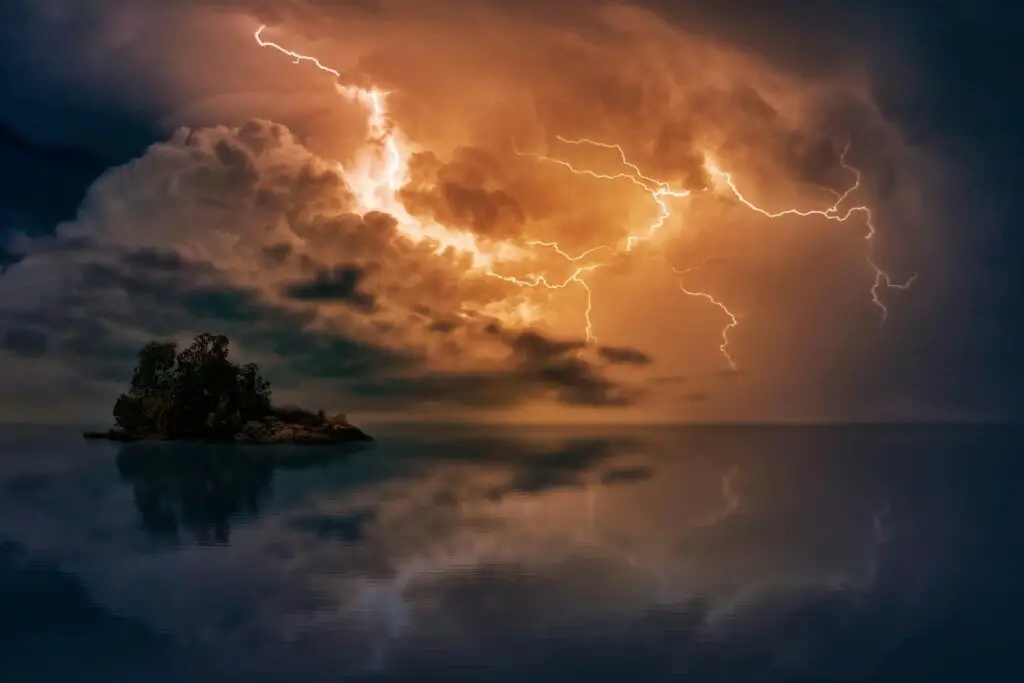
Among many Native American tribes, the Thunderbird was a massive spirit bird who flapped its wings to make thunder and shot lightning from its eyes. The Thunderbird was both feared and respected, embodying the raw power of storms. Some tribes saw it as a guardian, others as a fierce enforcer of justice.
Carvings of Thunderbirds appear in totems and stories passed down for generations. To see a lightning storm was to witness the bird’s fury firsthand. Hunters and warriors would often tell stories of encountering it in dreams. The Thunderbird remains one of the most enduring lightning legends in North America.
7. Fire from the Gods
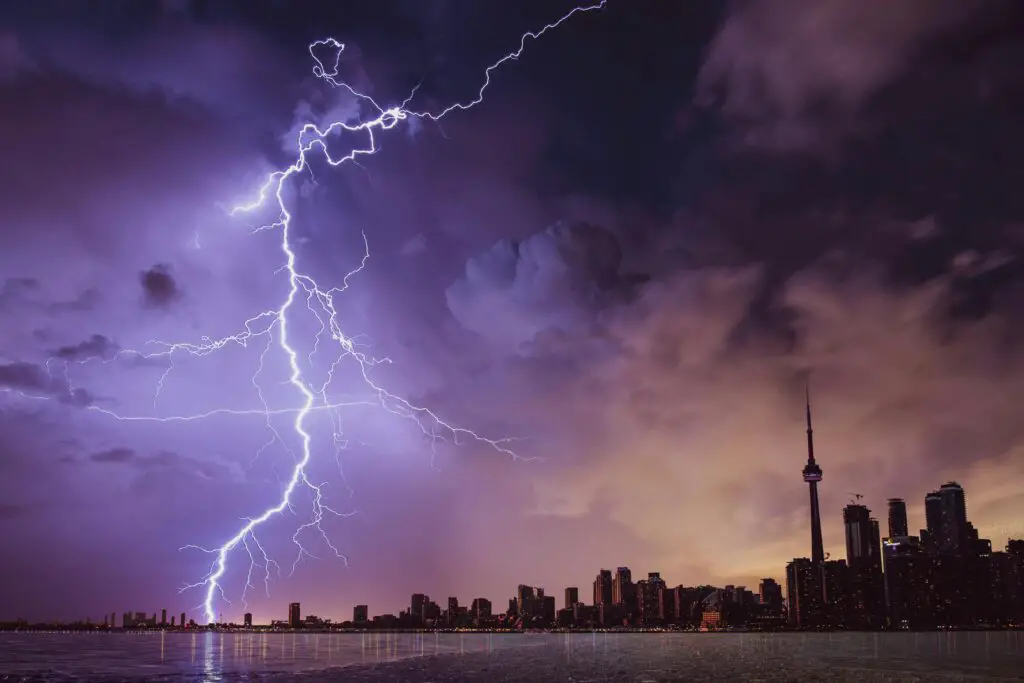
In ancient India, the god Indra was the ruler of storms and wielder of the thunderbolt called Vajra. People believed Indra hurled it to punish demons and protect humanity. Lightning, therefore, wasn’t random—it was a divine battle playing out across the sky.
Priests and villagers offered sacrifices to Indra to win his favor. Rain and lightning were seen as signs of blessing if they came in moderation, but punishment if they destroyed crops. Stories of Indra’s battles became a way of explaining the destructive yet life-giving nature of storms. The crack of lightning was his weapon striking true.
8. Witches and Storms
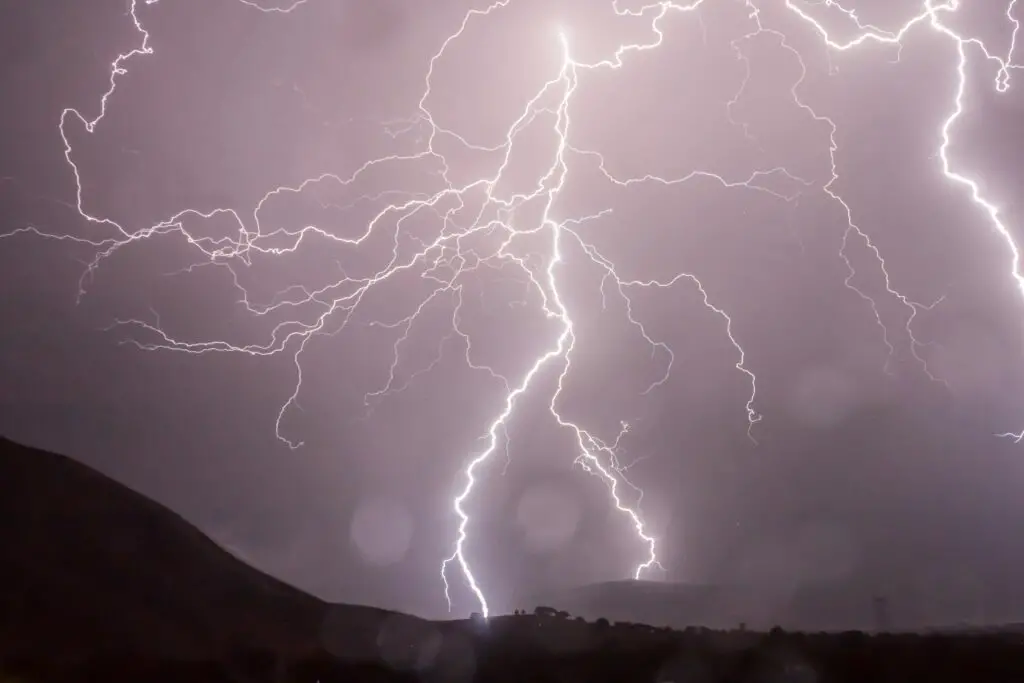
In parts of Europe, lightning storms were often blamed on witches. People believed witches could summon storms to harm crops or punish their enemies. A house struck by lightning might be seen as proof that a witch lived nearby.
Superstitions spread that witches carried “storm stones” or whispered spells to call down thunder. Villagers would sometimes burn supposed witches after a destructive lightning storm, convinced they had brought it on. It shows how fear of the unknown could turn natural weather into something sinister. The legend kept suspicion alive in many communities.
9. The Sky Spear
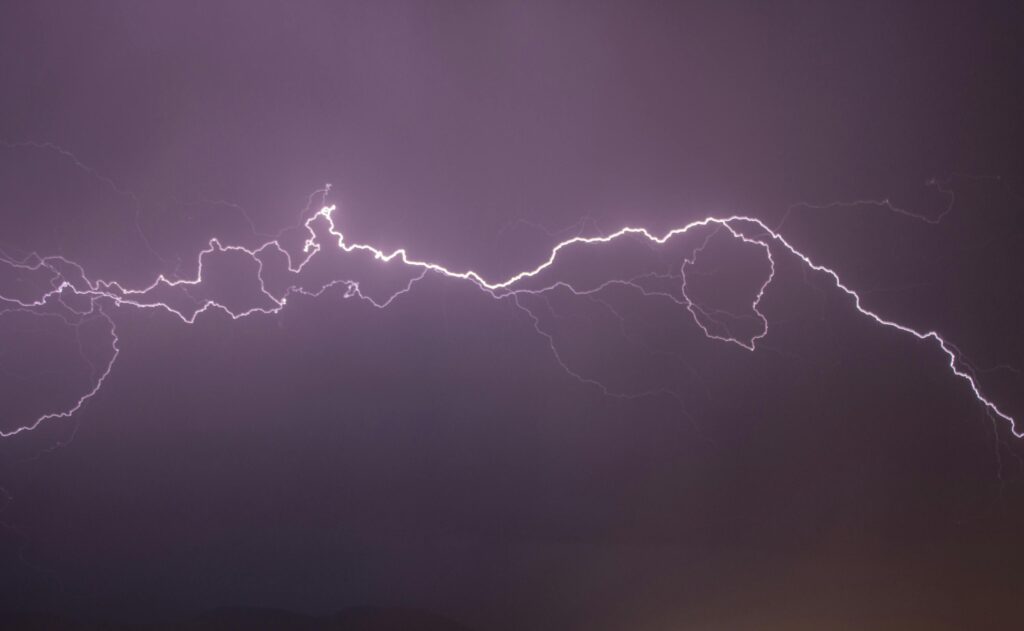
In Japan, lightning was sometimes called the “Sky Spear.” It was believed to pierce the earth and fertilize rice fields, making it a strange mix of fear and blessing. Farmers thought a strike nearby could actually help crops grow stronger.
At the same time, people were careful to show respect. Shinto shrines often honored Raijin, the god of thunder and lightning, with offerings to keep his spear from striking their homes. The idea that lightning carried both danger and prosperity gave it a complicated but important place in rural life.
10. Lightning Spirits
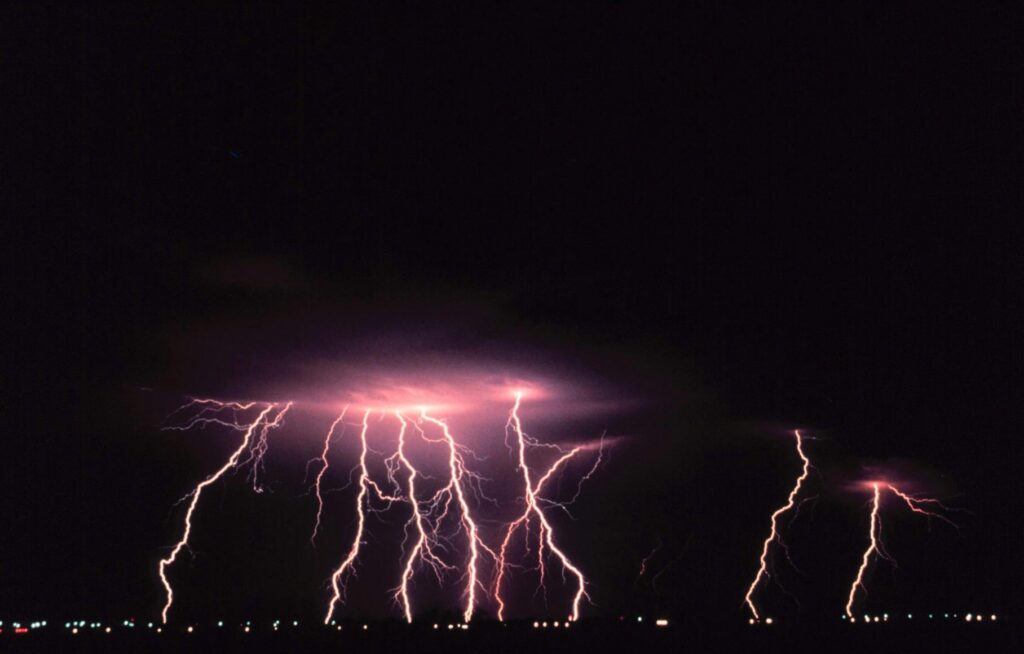
In African folklore, lightning was sometimes explained as spirits traveling between heaven and earth. These spirits could be angry or benevolent, depending on how people lived. Villages hit by lightning were often seen as being judged by the spirits.
Certain rituals were performed to cleanse a struck place. Shamans might be called in to interpret what the spirits meant. It wasn’t just a storm—it was a message that people needed to take seriously. Lightning became a bridge between the human and spiritual worlds.
11. The Dragon’s Breath
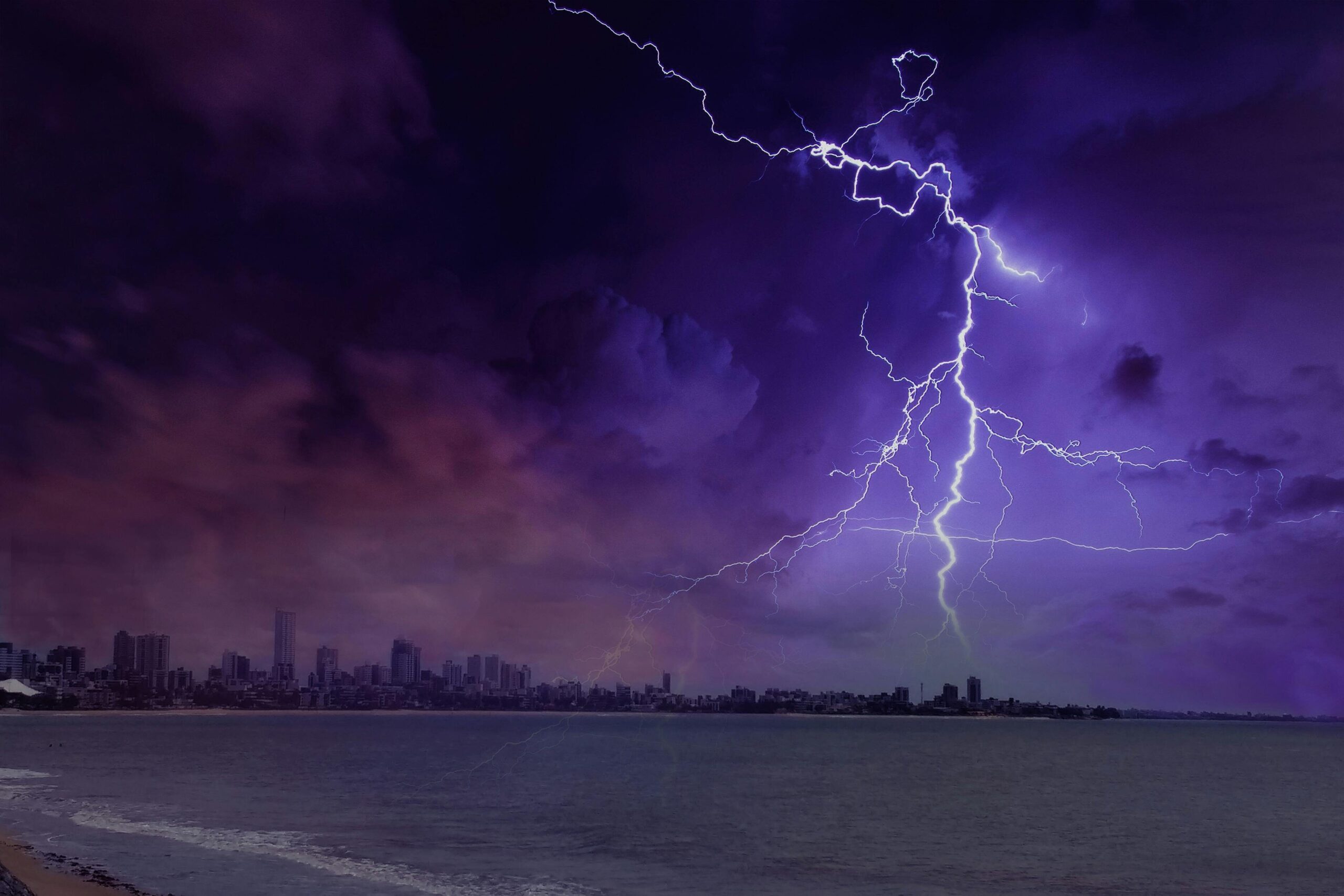
In China, some stories described lightning as the breath of dragons flying across the sky. Thunder was the beating of their wings. The flashes of light were said to be sparks flying from their fiery mouths.
Since dragons were both powerful and auspicious, lightning could be interpreted as a sign of their presence. People often prayed for protection or good fortune during storms. The idea of dragons creating lightning blended mythology with weather in a dramatic and unforgettable way. It gave storms a sense of wonder as well as fear.
12. The Fiery Cross
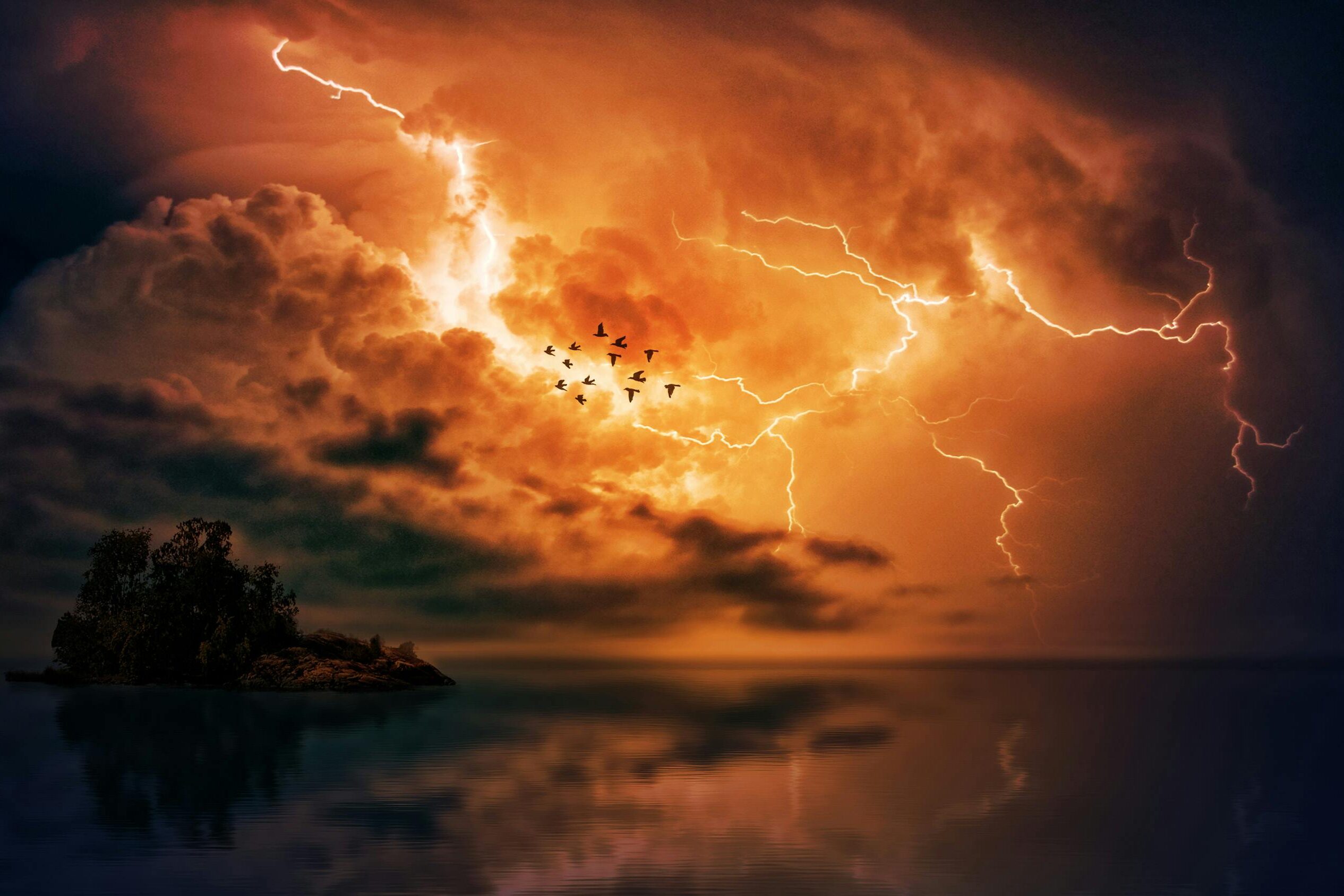
In Scotland, some believed that when lightning struck, it formed invisible crosses of fire in the air. These fiery crosses were thought to be omens of coming disaster or death. People watched storms with dread, worried what the signs might mean.
If lightning hit near a village, elders often warned that sickness or famine was close behind. This belief turned storms into prophecies. Even when no disaster followed, the fear lingered. It shows how easily natural events became tied to superstitions about fate.
13. Trees of the Gods
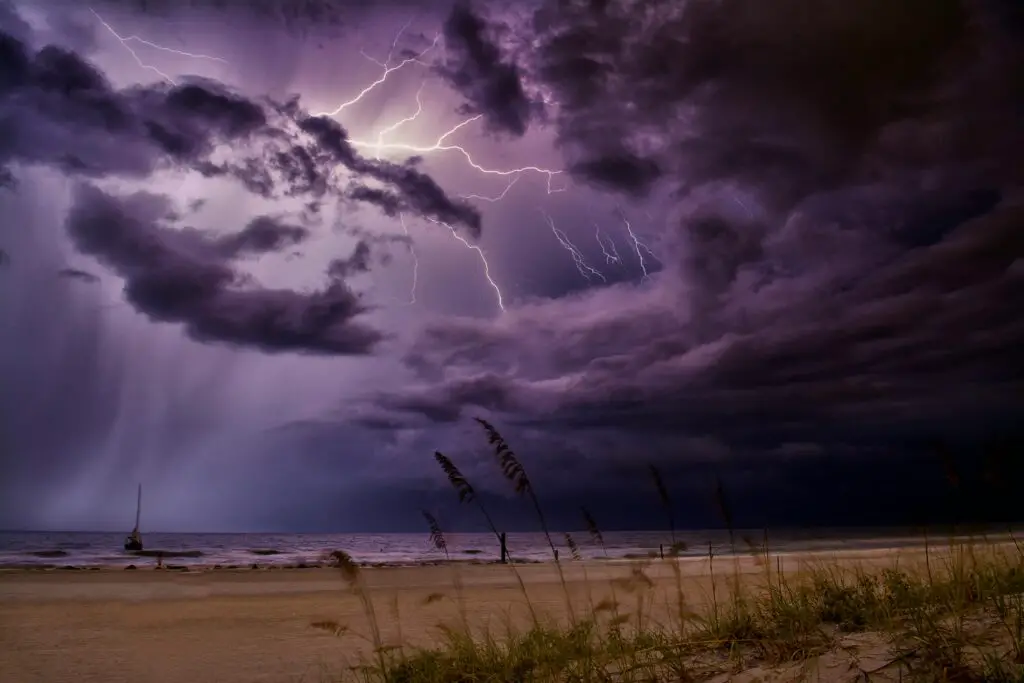
In Germany, oak trees were believed to be sacred to the thunder god Donar, or Thor. Because lightning often struck them, people thought they were chosen trees. Standing near an oak during a storm was seen as dangerous, but the tree itself was revered.
Villagers sometimes gathered the wood of a struck oak for charms and amulets. They thought it carried protective power since it had survived a bolt from the heavens. Even as Christianity spread, the association between oaks and divine lightning endured. The trees became living symbols of the gods’ might.
14. Lightning and the Dead
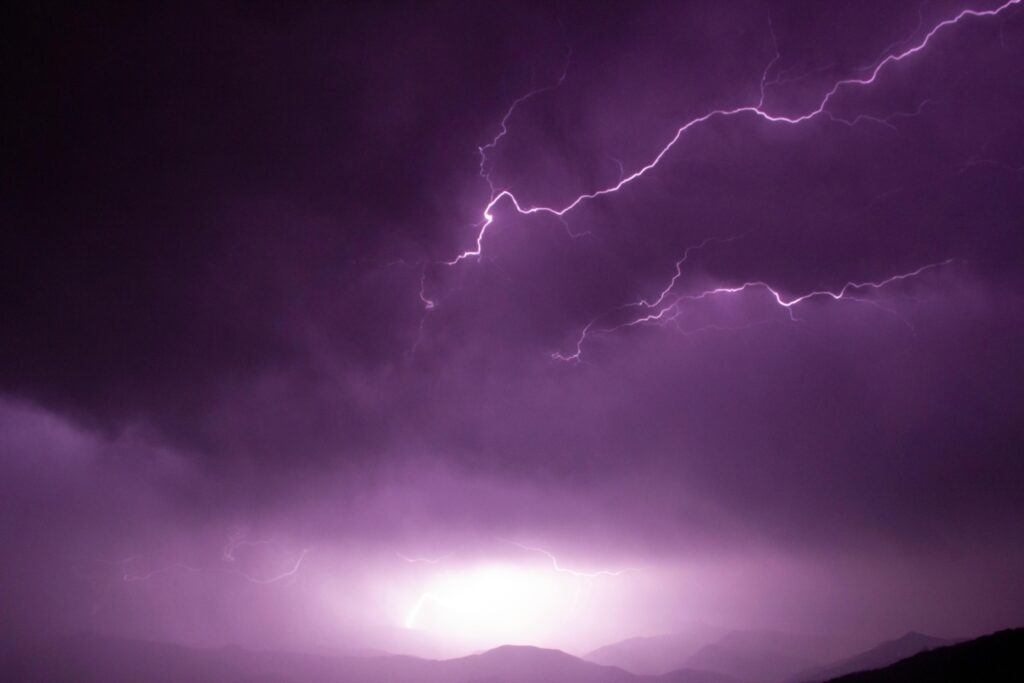
In some cultures, lightning was linked to the spirits of the dead. A strike was believed to be a soul ascending or descending from the world of the living. Cemeteries struck by lightning were thought to be restless places.
People sometimes left offerings to calm these spirits and ensure peace for the departed. The flashes in the sky were like doorways opening and closing. This belief gave storms a solemn, eerie feeling. It wasn’t just weather—it was the movement of souls.
15. Divine Judgment
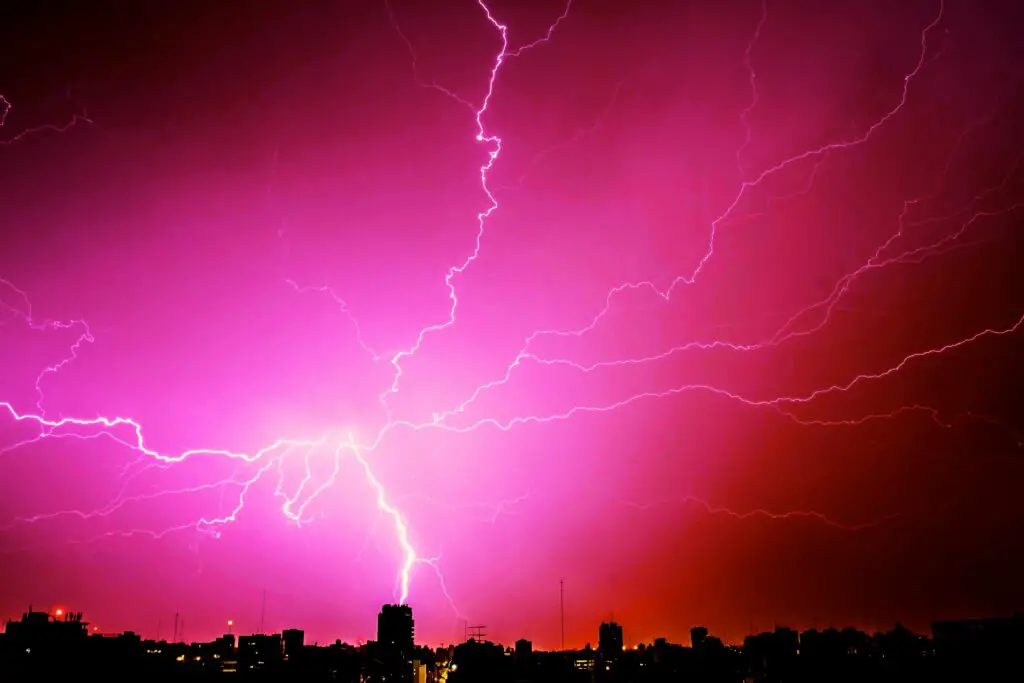
Throughout history, many religions framed lightning as a tool of divine judgment. When a church spire or house was hit, people said God had punished the sinful or warned the faithful. The randomness of strikes made it easy to interpret them as messages.
Preachers sometimes used lightning events in sermons, pointing to them as proof of God’s power. Survivors of strikes might even be viewed as specially chosen, either blessed or cursed. This legend lasted well into the modern era before science explained electricity. Still, the idea of judgment lingers in how people talk about “acts of God” today.
